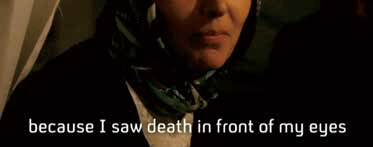Issue:
At a recent forum on global media, researchers and reporters shared thoughts on how to deal with covering tragic events.
Reporting tragedy: rules and risks
by JULIAN RYALL

JOURNALISTS NEED TO interview the displaced, the distressed and the denied with a special kind of care, believes Gavin Rees, executive director of the Dart Centre Europe. And that applies whether the subjects are refugees from the conflict in Syria, survivors of a terrorist atrocity or someone who has gone through a natural disaster such as 3/11.
“As journalists, we were told in the past that you wrote down what you were told by the interview subject and that you were then good to go,” said Rees, speaking at a symposium in Bonn that was part of the Global Media Forum 2015 organized by German broadcaster Deutsche Welle. “But when you are dealing with people who are vulnerable, then different rules have to apply. Someone who has been the victim of a sexual assault, for example, is not in the same place as a clued up politician.”
That need to tread carefully and slowly is invariably at odds with the demands of a news desk. “You’re on a tight deadline, but how do you get the correct information?” Rees asked. “A journalist needs to be very careful about spending enough time with a person to make sure they get enough context and to make sure their report is correct.”
Dr. Iris Graef Calliess, the head physician at Germany’s Center for Transcultural Psychiatry and Psychotherapy, said studies indicate that asking a survivor of war, tragedy or natural disaster to go back over their experiences can activate or reactivate in someone who is recovering post traumatic stress disorder, depression or psychotic disorders.
“You have to do all that you can to reduce stress levels in anyone you are interviewing,” she said. “Emotional support is very important; you need to build a relationship with this person and develop a sense of trust that will give them a sense of safety.”
The risk a journalist runs of failing to take such steps is that they will get the story wrong. “One symptom of PTSD is memory dysfunction, meaning that they just don’t remember important facts,” Graef Calliess said. “And demands for more information, for more details can act as a trigger for re-traumatization.”
She recommended using sensitivity, delicacy and giving the interview subject “enough space and time” to explain their experiences in their own words. “And never cut someone off when they are recounting an experience that was the most awful of their lives; it makes you look as if you don’t care,” she added.
Mani Yassir Benchelah, a Turkish filmmaker, has spent a good portion of the last three years documenting the lives and losses of refugees from the civil war in Syria and the subsequent emergence of ISIS. “I learned to keep the interviews short and stop whenever I sensed they were becoming uncomfortable,” he said.
“I only interviewed children when their parents agreed that they were ready to handle the questions and when they were in a place where they felt safe to express their feelings. I had to step back and practice ‘good listening.’”
Despite all the precautions, however, the softly softly approach does not always work. In one of Benchelah’s documentaries, a young Syrian boy stutters and his facial spasms become increasingly pronounced as he talks about being pursued by soldiers who “want to kill us all.”
Rees believes that open ended questions are often the most effective in such situations as they give the speaker the chance to relate their experiences or, if they are uncomfortable, to redirect the conversation in a less threatening direction.
And such tactics are not merely for the sake of people who have been through traumatizing experiences, Rees added. “It is also a question of self care for a journalist. The way that you cover harrowing stories will help you maintain your resilience and stop your own personal health from suffering from everything that you have seen.”
Just as the people affected by tragedy and disaster will be affected for the rest of their lives, studies have shown that journalists who have reported from war zones and the scenes of natural disasters will also carry those memories with them. Unsurprisingly, photographs and video footage often serve as the trigger, with the American Psychiatric Association setting new guidelines in 2013 on post traumatic stress disorder to recognize that immersive work with traumatic imagery is a “specific risk factor for journalists.”
To reduce the trauma load, the Dart Centre has drawn up a list of practical steps that media workers can take to ease the pressure, including eliminating needless repeat exposure and never passing on potentially shocking material to a colleague without a warning. They also recommend frequent breaks and creating “distance” from the images being viewed by focusing on certain details, such as clothes, instead of faces.
Ironically, given Japan’s experiences in March 2011, the Dart Centre suggests that journalists “think of traumatic imagery as if it is radiation, a toxic substance that has a dose dependent effect. Journalists, like nuclear workers, have a job to do: at the same time, they should take sensible steps to minimize unnecessary exposure.”
Julian Ryall is the Japan correspondent for the Daily Telegraph.

